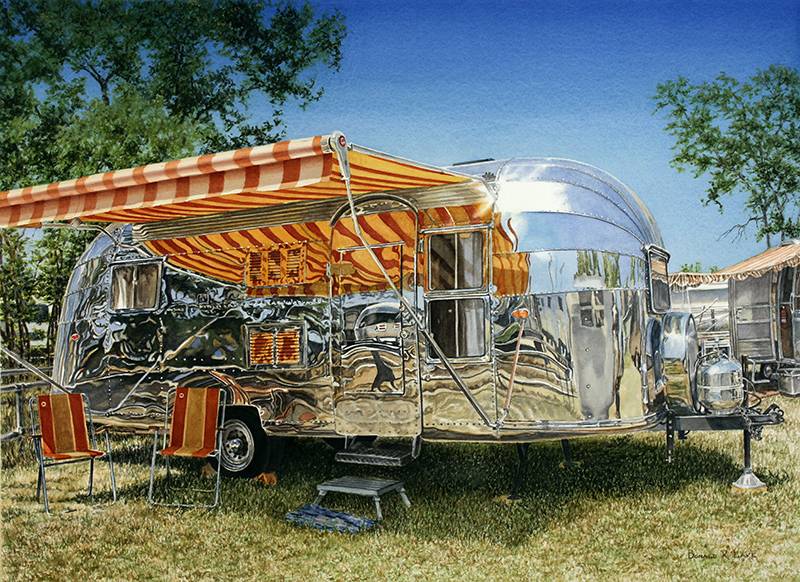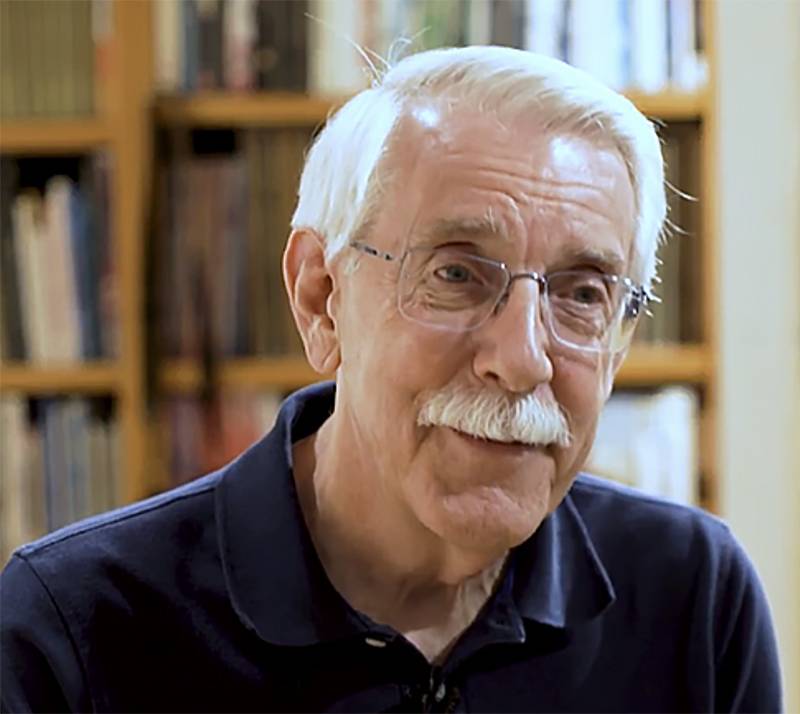There are many reasons why art lovers make it a point to hit the opening night reception of a new exhibit. And all of them hold true for this Thursday’s artist reception for “Don Lake: A Watercolor Retrospective.” Live music (The Derick Cordoba Trio). A buzzing excitement in the air which is only heightened by the presence of wine (cash bar). (Local) celebrity sightings (opening remarks by Parkland President Tom Ramage). But for those of us who are there to dive deeper into the art, it’s all about the chance the listen to the artist talk about his inspiration, his process, and, with a career as rich and productive as Lake’s, his reflections on a lifetime of work. And while many artists are stronger at the easel than at the podium, Don Lake’s lifelong commitment to teaching and his inherent eloquence are by far the most important reasons to make sure you’re in the Giertz Gallery Thursday night, when he’ll be giving the first of two free and open to the public talks.
Though he hails from Wichita, Kansas, where he received both his BFA and MFA, central Illinois has come to claim his as a true local treasure. A beloved and respected teacher, Lake is Professor Emeritus of Parkland College and has served on the faculty at Eastern Illinois University in Charleston. Though his work is shown throughout the country and beyond, he maintains his local connection to Urbana’s Cinema Gallery, which represents him.
Lake is renown for his skillful and wide-ranging application of transparent watercolor techniques. Many of the pieces included in this retrospective achieve a level of near-photo realism that is delightfully surprising—especially in person.
If you are new to the concept of transparent watercolor painting, I’ll share these descriptions from the members of the Transparent Watercolor Society of America.
“…white paper showing through a transparent wash is the closest approximation to light in all the media, and light is the loveliest thing that exists. This is how Edgar Whitney describes and extols the virtues of transparency. Cheng Khee Chee expands on Whitney’s definition by describing the effects of transparent washes. The flow of washes possess a strong evocative power. The interpenetration of colors creates mysterious precipitations and nuances. Respected artist and teacher, Frank Webb, describes luminosity as … the painting’s ability to give off light. It generally derives from the light within and beneath — such as the white of watercolor paper under paint.”
An artist’s relationship to and expression of light is perhaps the foundational element in developing a signature style (e.g., Manet and Seurat). Lake’s technique (which has won him the Watercolor Honor Society’s Lifetime Achievement Award) will change how you see light in watercolors; and perhaps, as it did for me, change my entire experience of the medium and the genre.

(’57 Airstream Caravanner, transparent watercolor, 2013, collection of the artist)
In addition to his technique, what I find most extraordinary about Lake’s work is his subject matter— both in terms of its uniqueness and its continual growth and evolution. Perhaps the last thing one expects to find in a watercolor exhibition is an image of an Airstream. But it becomes clear why this was chosen as the show’s signature image. It represents so many of Lake’s subjects throughout his career: travel, motor vehicles (and their factory-based creation) united—and yet, in contast with—natural landscapes.
The son of an oil refinery worker, Lake was no stranger to the world of factories and industrial spaces. His “Industry” series, inspired by the decline of American factories and their role in stablizing middle-class life, viscerally illicts their heat, noise, and potential for danger, while celebrating their cultural and socio-economic value.
The retrospective casts a wide net in regards to Lake’s evolving subject matter. You’ll enjoy portraits, landscapes near and far, and some works pushing into brighter, bolder palettes and simpler geometric compositions which border on the abstract.
If you can, come to the opening. If you can’t, come another time—particularly on the day of Lake’s artist lecture or Atterbery’s gallery walkthrough. Perhaps it will change the way you look at your own landscapes, or transform your appreciation of light. You don’t have to be an artist, or an art student. You just have to be open to exploring new ways of seeing.
Finally, I’ll leave it to art historian Gisele Atterbery, who interviewed Lake and created the insightful copy for the exhibition catalog, to make the case.
“With rare exceptions, Don’s painting has been about the pleasure taken in what natural vision provides and the experiece of the world around us. Light, reflection, and linear complexity consistently have captivated him, and over time, he has sought these out in subjects as diverse as machinery, the Midwestern landscape, and the grand vistas of Palo Duro Canyon.
Watercolor has a history intertwined with science, and as a medium, it has been a tool to aid in the process of learning and discernment. Don’s career shows us a respect for this. He may show us things or places we may already know, but after viewing his work, we know them in new and deeper ways.”
Stayed tuned to the arts section for a full review of the show and coverage of the upcoming talks.
Watch this video interview honoring the artist on his 2017 40 North Lifetime ACE Award.
Video courtesy of 40 North and the artist
Don Lake Retrospective
Giertz Gallery at Parkland College
June 17th through August 8th
2400 W Bradley Ave, Champaign
Reception: June 20th, 5:30 to 7:30 p.m. including gallery talk by the artist at 6:30 p.m.
Additional artist talk by Don Lake: June 25th, 6 p.m., room C118
Gallery walkthrough by Gisele Atterberry: Tuesday, July 23rd at noon
Summer gallery schedule available online
Learn more about Don Lake
Top photo of the artist from his website








